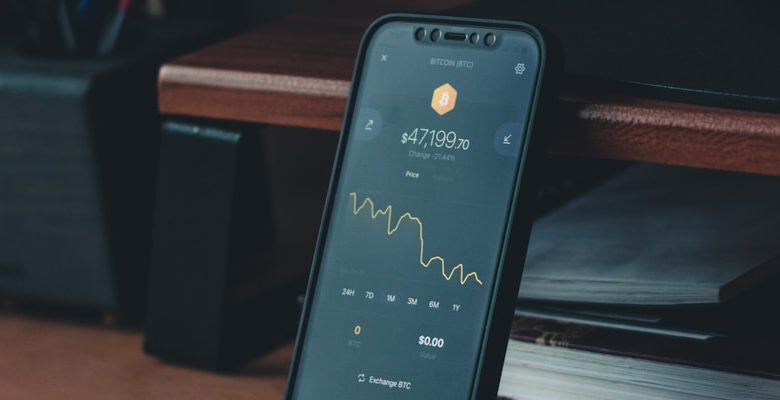How to Use Margin Trading in Cryptocurrency

- Understanding the basics of margin trading
- Choosing the right cryptocurrency exchange for margin trading
- Setting up your margin trading account
- Managing risk and leverage in margin trading
- Strategies for successful margin trading in cryptocurrency
- Common mistakes to avoid in margin trading
Understanding the basics of margin trading
Margin trading is a strategy that allows investors to borrow funds to increase their buying power in the market. By using leverage, traders can potentially amplify their profits if the market moves in their favor. However, it is important to note that margin trading also comes with increased risks, as losses can be magnified as well.
When engaging in margin trading, traders must maintain a minimum account balance known as the maintenance margin. If the account balance falls below this threshold, a margin call will be issued, requiring the trader to deposit more funds or risk having their positions liquidated.
It is crucial for traders to have a solid understanding of the basics of margin trading before diving into the world of cryptocurrency. By familiarizing themselves with concepts such as leverage, margin requirements, and risk management strategies, investors can make informed decisions and mitigate potential losses.
Overall, margin trading can be a powerful tool for experienced traders looking to maximize their profits in the cryptocurrency market. However, it is not suitable for beginners or those unfamiliar with the risks involved. It is recommended to start with a small amount of leverage and gradually increase exposure as you gain more experience and confidence in your trading abilities.
Choosing the right cryptocurrency exchange for margin trading
When it comes to margin trading in cryptocurrency, choosing the right exchange is crucial for success. Not all exchanges offer margin trading, and those that do may have different terms and conditions. Here are some factors to consider when selecting a cryptocurrency exchange for margin trading:
- Security: Look for an exchange with a strong reputation for security measures to protect your funds.
- Leverage options: Consider the leverage options available on the platform, as this will determine how much you can borrow to trade.
- Fees: Compare the fees charged by different exchanges for margin trading to find the most cost-effective option.
- Liquidity: Ensure that the exchange has high liquidity to enable quick and easy trading.
- Customer support: Choose an exchange with responsive customer support to assist you with any issues that may arise.
By carefully considering these factors, you can select the best cryptocurrency exchange for margin trading that meets your needs and helps you maximize your trading potential.
Setting up your margin trading account
To set up your margin trading account for cryptocurrency, you will need to follow a few simple steps to get started.
First, you will need to choose a reputable exchange that offers margin trading services. Look for an exchange that has a good reputation, strong security measures, and a user-friendly interface. Once you have selected an exchange, you will need to create an account and complete the verification process.
Next, you will need to deposit funds into your account. This can typically be done via bank transfer, credit card, or cryptocurrency deposit. Make sure to deposit an amount that you are comfortable with, as margin trading involves significant risk.
After you have funded your account, you can start trading on margin. To do this, you will need to select the cryptocurrency you want to trade, choose the amount of leverage you want to use, and place your trade. Keep in mind that trading on margin can amplify both gains and losses, so it is important to be cautious and only trade with funds that you can afford to lose.
Once your trade is executed, you will be able to monitor your position in real-time and make adjustments as needed. It is important to keep a close eye on your trades when margin trading, as the market can be volatile and prices can change rapidly.
Overall, setting up a margin trading account for cryptocurrency is a straightforward process that can offer the potential for increased profits. Just remember to trade responsibly and always do your own research before making any investment decisions.
Managing risk and leverage in margin trading
When engaging in margin trading with cryptocurrency, it is crucial to manage risk and leverage effectively to maximize potential profits and minimize losses. By understanding how to use leverage wisely, traders can take advantage of market movements without exposing themselves to excessive risk.
One key strategy for managing risk in margin trading is setting stop-loss orders. Stop-loss orders automatically sell a position once it reaches a certain price, helping to prevent further losses if the market moves against the trader. By setting stop-loss orders at strategic levels, traders can protect their capital and avoid being liquidated.
Another important aspect of managing risk in margin trading is diversification. By spreading out investments across different assets, traders can reduce the impact of a single asset performing poorly. Diversification helps to mitigate risk and protect against unexpected market events that could lead to significant losses.
When it comes to leverage, it is essential to understand how much leverage to use based on risk tolerance and market conditions. While leverage can amplify profits, it can also magnify losses if the market moves against the trader. By using leverage conservatively and not overextending positions, traders can avoid being liquidated and protect their capital.
Overall, managing risk and leverage in margin trading involves a combination of setting stop-loss orders, diversifying investments, and using leverage judiciously. By implementing these strategies effectively, traders can navigate the volatile cryptocurrency markets with confidence and increase their chances of success.
Strategies for successful margin trading in cryptocurrency
When engaging in margin trading in cryptocurrency, it is essential to have a solid strategy in place to maximize your chances of success. Here are some strategies to consider:
- Research and Analysis: Before entering any trade, conduct thorough research and analysis to understand the market trends and make informed decisions.
- Risk Management: Set stop-loss orders to limit potential losses and avoid margin calls that could wipe out your account.
- Diversification: Spread your investments across different cryptocurrencies to reduce the impact of any single asset’s volatility.
- Start Small: Begin with a small margin to test the waters and gain experience before increasing your exposure.
- Continuous Learning: Stay updated on the latest news and developments in the cryptocurrency market to adapt your strategy accordingly.
By following these strategies, you can increase your chances of success in margin trading and minimize the risks associated with this high-risk, high-reward form of trading.
Common mistakes to avoid in margin trading
When engaging in margin trading, there are several common mistakes that traders should avoid in order to minimize risks and maximize potential profits.
- One common mistake is over-leveraging, which occurs when traders borrow more funds than they can afford to repay. This can lead to significant losses if the market moves against them.
- Another mistake to avoid is neglecting risk management strategies. It is essential to set stop-loss orders and take-profit targets to protect your investment and lock in profits.
- Additionally, traders should not ignore market research and analysis. Making trades based on emotions or rumors rather than data and trends can result in poor decision-making and losses.
- Furthermore, failing to diversify your portfolio is a mistake that can expose you to unnecessary risks. By spreading your investments across different assets, you can reduce the impact of a single asset’s poor performance.
- Lastly, it is crucial to avoid trading on margin without a clear understanding of how it works. Educate yourself on the mechanics of margin trading and ensure you are aware of the associated fees and interest rates.



